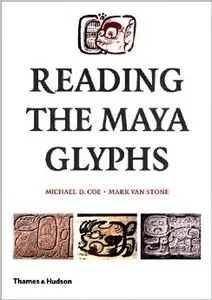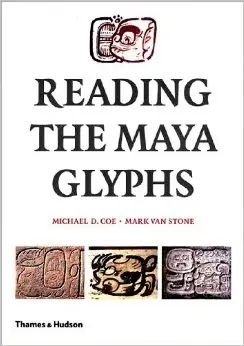Michael D. Coe, Mark Van Stone, "Reading the Maya Glyphs"
Publisher: Thames & Hudson | 2001 | ISBN: 0500051100 | English | PDF | 176 pages | 16.6 Mb
Publisher: Thames & Hudson | 2001 | ISBN: 0500051100 | English | PDF | 176 pages | 16.6 Mb
In the recent past, a working knowledge of the Maya script has been confined to epigraphers, art historians and other specialists. Its very unfamiliarity to the general public, and the daunting aspect of its approximately 800 signs, have made the system appear more complex and arcane than it really is. Reading the Maya Glyphs is a compact, portable guide to enable students, tourists and armchair travellers to read and understand commonly encountered Classic Maya texts. Topics covered include the nature of the script, the intricate Maya calendar, dynastic and political texts, and every aspect of the natural and supernatural world in which they lived. Written by the world's leading authority in Maya studies, Michael D. Coe, and illustrated by the drawings of Mark Van Stone, one of America's outstanding calligraphers, the book presupposes no previous training in Maya epigraphy or archaeology. Whether in the hands of visitors to the great Maya sites of Mexico and Central America or consulted by museum-goers, this guide should enhance their appreciation some of the world's greatest art and architecture.
From Library Journal
Although most Mayan inscriptions have been deciphered within the last 30 years, very little has been written for the general reader interested in learning to read these ancient hieroglyphics. To remedy this, anthropologist Coe (Breaking the Maya Code) and calligrapher Van Stone have put together this illustrated manual. After an introductory chapter on Mayan history and culture, an overview is given of Mayan script, phonetics, and morphology, which readers need to study carefully with the help of the syllabary and lexicon provided in the appendix. The authors then go on to introduce glyphs, elaborating on subjects like time, the Mayan calendar, royalty, places, titles, relationships, warfare, scribes and artists, ceramic texts, religion, and nature. Also provided are exercises, a discussion of formulae and tables for calendrical calculations, references to software programs, and suggestions for further study. Although no previous knowledge of Mayan culture or language is assumed, this is not a simple primer to take on a trip to the Yucat n. Some background reading, especially on the Mayan calendar and Mayan history, is needed to benefit fully from this manual. For academic and large public libraries. Lucille M. Boone, San Jose P.L., CA
Copyright 2002 Reed Business Information, Inc.
Succeeds on all fronts. – Choice, September 2002
The best single introduction to Maya writing, one of the most beautiful but difficult scripts in the world. – Stephen Houston, author of Royal Courts of the Ancient Maya
Although most Mayan inscriptions have been deciphered within the last 30 years, very little has been written for the general reader interested in learning to read these ancient hieroglyphics. To remedy this, anthropologist Coe (Breaking the Maya Code) and calligrapher Van Stone have put together this illustrated manual. After an introductory chapter on Mayan history and culture, an overview is given of Mayan script, phonetics, and morphology, which readers need to study carefully with the help of the syllabary and lexicon provided in the appendix. The authors then go on to introduce glyphs, elaborating on subjects like time, the Mayan calendar, royalty, places, titles, relationships, warfare, scribes and artists, ceramic texts, religion, and nature. Also provided are exercises, a discussion of formulae and tables for calendrical calculations, references to software programs, and suggestions for further study. Although no previous knowledge of Mayan culture or language is assumed, this is not a simple primer to take on a trip to the Yucat n. Some background reading, especially on the Mayan calendar and Mayan history, is needed to benefit fully from this manual. For academic and large public libraries. Lucille M. Boone, San Jose P.L., CA
Copyright 2002 Reed Business Information, Inc.
Succeeds on all fronts. – Choice, September 2002
The best single introduction to Maya writing, one of the most beautiful but difficult scripts in the world. – Stephen Houston, author of Royal Courts of the Ancient Maya





